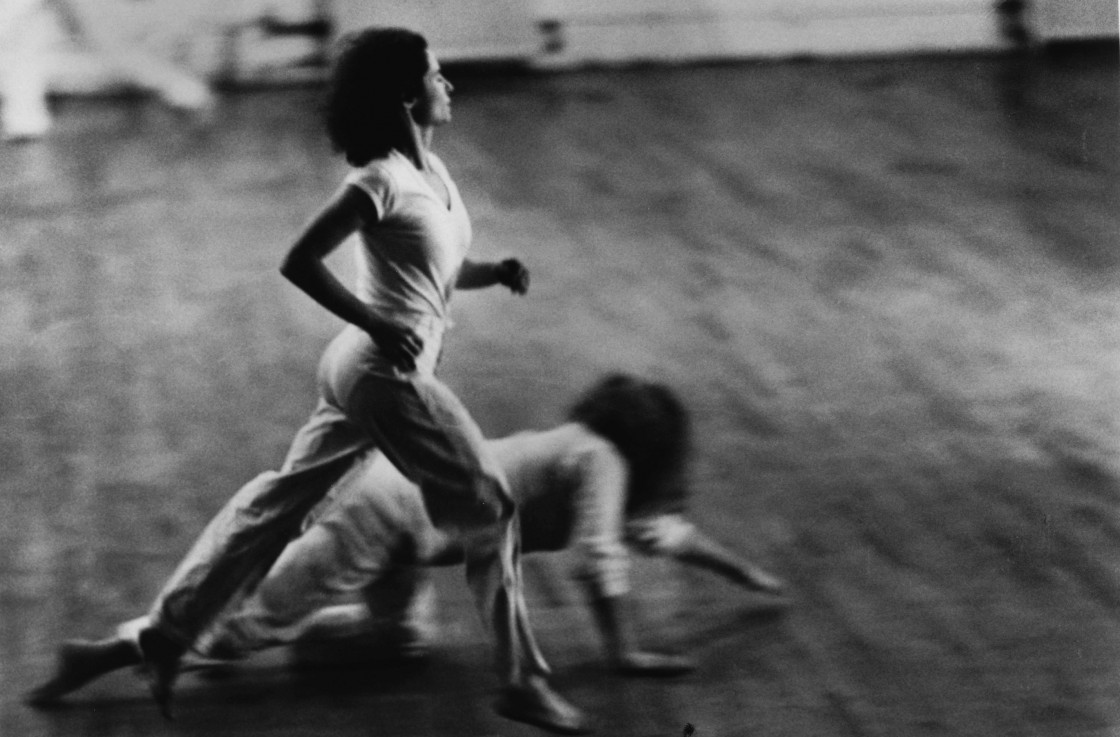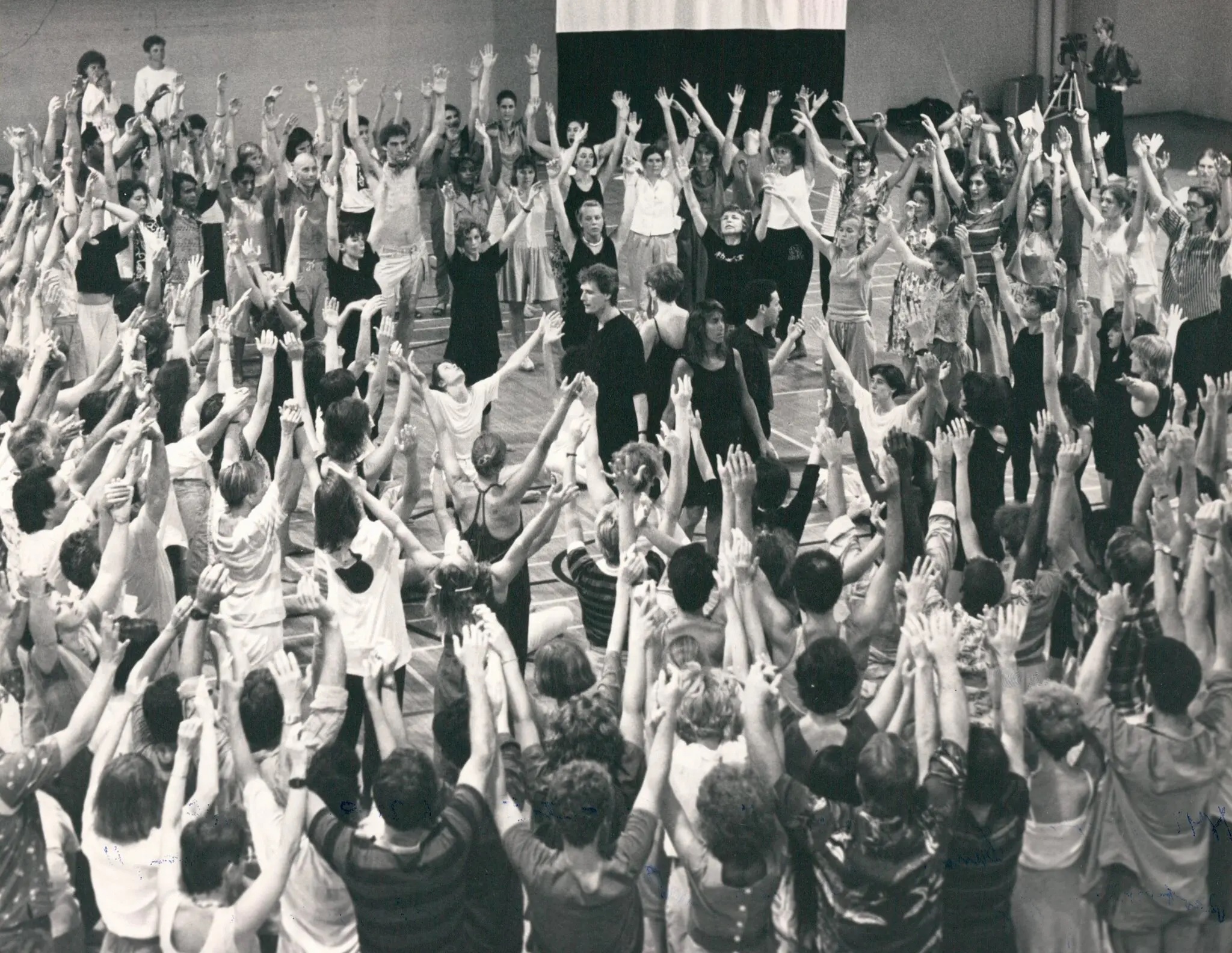Obsessions:
The Visionary Movement of Anna Halprin & Simone Forti

Anna Halprin, Ceremony of Us, 1969. Rehearsal view, Merritt College, Oakland, CA, 1970
This season, we’ve found ourselves drawn to those who challenge conventions—visionaries who carve their own paths with unwavering conviction. Two figures who have captivated us are Simone Forti and Anna Halprin, icons of postmodern dance whose revolutionary approach reimagined traditional forms and redefined movement, exploring the idea that authentic movement can communicate what words often cannot.
"Movement is the language of experience. What you feel, you dance. What you dance, you feel."
-Anna Halprin

1. Performance view of Forti with molimo horn in Linz, Austria, 1976
2. Anna Halprin
Forti and Halprin’s intertwined journeys began in the mid-1950s in Northern California where Haprin, already an established dancer, hosted experimental dance workshops in the wooded slopes of Mount Tamalpais. Here, Halprin was pioneering a radical approach to movement, with work that deeply rooted in nature and focused on the profound connection between body and environment. Her performances often unfolded outdoors, dissolving the boundaries between dancer and spectator, art and life. She saw the body as a powerful vessel for expression, capable of conveying complex ideas through deceptively simple gestures—and her innovative "task-based improvisation" would go on to influence generations of dancers and choreographers.

Simone Forti, Planet, PS1, Long Island City, NY, October 1976
At the time, Simone Forti was a young dancer hungry for new forms of expression. Drawn to Halprin's innovative methods, Forti immersed herself in this world of movement for four transformative years, absorbing Halprin's philosophies while laying the foundation for her own unique artistic voice. In 1959, she moved to New York City and found new ground for collaboration in the 1960s art scene. There, she’d develop the groundbreaking "Dance Constructions" series, which used ordinary objects—ropes, plywood boards, and the dancers' own bodies—to explore the elemental and blend sculpture, performance, and improvisation. One of her most iconic pieces, "Huddle" (1961), epitomizes this approach: a group of performers cluster together, forming a human mound. One by one, they climb over the huddle, creating a constantly shifting living sculpture.

Simone Forti in Anna Halprin's The Branch
There is an unending well of inspiration to find in the legacies of these trailblazing women. Their work encourages us to look inward, to trust in the innate wisdom of our bodies. They remind us to move beyond the boundaries of convention and embrace what’s possible through collaboration. Their impact extends far beyond dance—it’s about the courage to forge new paths and daring to reimagine the world.

1. Anna Halprin
2. Poster for Simone Forti performance at Eye Level Gallery, Halifax, Nova Scotia, 1981
"When I dance, I know that it's partly a good visual experience for an audience member. But more than that, I feel that an audience member can identify with me, and can experience my movement, and what I'm experiencing."
-Simone Forti in The Paris Review

Anna Halprins Circle the Earth, 1961